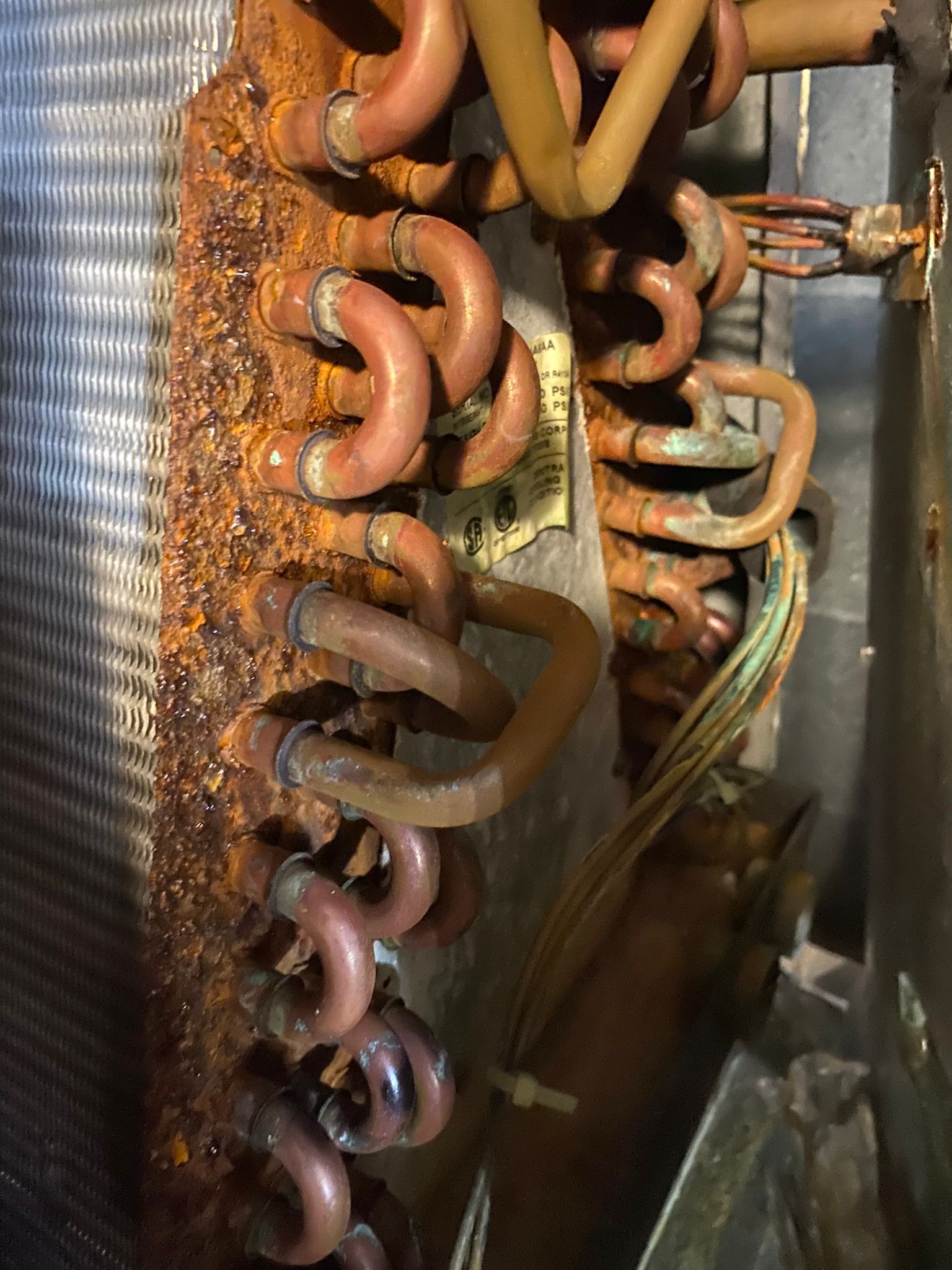When most homeowners think about air conditioning maintenance, they picture replacing filters or cleaning vents. But deep inside your AC system lies one of the most critical—and most overlooked—components:
the evaporator coil.
This coil is responsible for absorbing heat from your indoor air and allowing your AC to cool your home efficiently. But when it gets dirty, everything from your electric bill to your indoor air quality begins to suffer.
In this comprehensive guide, we break down why evaporator coil cleaning is essential, how it affects your system, and why professional cleaning is the smartest long-term investment you can make.
What Is an Evaporator Coil and Why Does It Get Dirty?
Your evaporator coil is located inside your air handler or furnace. As warm indoor air moves over the coil, refrigerant absorbs the heat and cools the air before sending it back into your home.
Over time, the coil collects:
- Dust and fine debris
- Pollen and outdoor contaminants
- Pet hair and dander
- Mold spores (due to moisture buildup)
- Lint and construction debris
- Bacteria and microbial growth
Because the coil is constantly exposed to moisture, dirt sticks to it easily—creating a thick, insulating layer that reduces efficiency and contaminates your indoor air.
The Hidden Consequences of a Dirty Evaporator Coil
A dirty coil affects more than just your cooling. The consequences ripple across your home’s comfort, health, and energy use.
1. Reduced Cooling Efficiency
Even a thin layer of dirt makes it harder for the coil to absorb heat. Studies show that a dirty coil can reduce system efficiency by 20–40%.
2. Higher Energy Bills
When the coil is clogged, your AC runs longer and harder, consuming more electricity—and adding unnecessary costs to your monthly bill.
3. Weak Airflow
Dirt and blockage restrict airflow, making it feel like your AC “isn’t blowing cold air” even though the system is still running.
4. Increased Wear and Tear
The longer your system strains to cool your home, the more stress is placed on motors, compressors, and other components, leading to expensive repairs.
5. Mold Growth Inside the HVAC System
Moisture + dirt = the perfect environment for mold. Once mold begins growing on your evaporator coil, it can spread through your duct system and into your living spaces.
6. Air Quality Problems
Dirty AC coils recirculate contaminants such as:
- Allergens
- Dust mites
- Mold spores
- Bacteria
- Odors
Symptoms include coughing, sneezing, headaches, sinus issues, and increased allergy flare-ups.
Signs Your Evaporator Coil Needs Cleaning
You may have a dirty coil if you notice:
- Warm air blowing from vents
- Weak or inconsistent airflow
- Unusual odors when the AC starts
- Frequent allergy symptoms
- Higher-than-normal energy bills
- Ice forming on the coil or refrigerant lines
- Water leaking around the air handler
- AC running constantly but cooling poorly
If you see two or more of these signs, it’s time for professional coil cleaning.
Why DIY Coil Cleaning Doesn’t Work
While filter changes and surface cleaning can be done at home, evaporator coil cleaning is different.
You need:
- Specialty tools
- Professional-grade chemicals
- Thorough access to the coil
- HVAC training to avoid damage
- Knowing how to reassemble and calibrate the system
DIY attempts often lead to:
- Bent coil fins
- Damaged refrigerant lines
- Chemical residue inside the HVAC
- Partial cleaning that leaves the core untouched
This is why HVAC professionals follow industry-approved methods to ensure a deep and safe clean.
The Professional Evaporator Coil Cleaning Process
A certified HVAC technician performs a multi-step deep cleaning:
1. System Inspection
Check for airflow problems, blockages, mold growth, and cooling performance issues.
2. Accessing the Coil
Panels are removed carefully to reach the evaporator coil without damaging surrounding components.
3. Using Commercial Coil Cleaners
Eco-friendly, non-corrosive cleaners break down heavy dirt, mold, and biofilm without harming the coil fins.
4. Fin Straightening (if needed)
Bent fins are straightened to improve airflow and efficiency.
5. Rinsing and Sanitizing
The coil is flushed, and antimicrobial treatments are applied to prevent mold growth.
6. System Reassembly & Testing
Airflow, temperature drop, and refrigerant performance are verified to ensure the AC runs like new.
How Often Should You Clean Your Evaporator Coil?
For most homes:
- Every 1–2 years for normal use
- Annually for homes with pets, smokers, allergies, or high dust levels
- After renovations, due to construction dust
- If you notice performance issues, clean immediately
Proactive maintenance saves money and improves your indoor air quality dramatically.
The Benefits of Professional Evaporator Coil Cleaning
✔ Lower energy costs
✔ Stronger and colder airflow
✔ Longer HVAC lifespan
✔ Fewer breakdowns and repairs
✔ Cleaner, healthier indoor air
✔ Mold and bacteria elimination
✔ Improved comfort throughout your home
It’s a small investment with big returns for your home’s comfort and safety.
Final Thoughts: A Clean Coil Means a Healthy, High-Performing AC System
Your evaporator coil may be hidden, but its impact is felt every day.
A dirty coil doesn’t just affect your cooling—it affects your health, your home’s efficiency, and your energy bills.
By scheduling professional evaporator coil cleaning, you ensure:
- Cleaner air
- Better cooling performance
- Lower monthly costs
- A longer-lasting HVAC system
Restore Your AC’s Efficiency Today
Don’t wait for high energy bills, weak airflow, or allergy symptoms to tell you something is wrong.
Protect your home with a professional evaporator coil cleaning from Dr. Clean Air.
📞 Call us now to book your service
📅 Flexible scheduling available
📍 Serving Ottawa homes & businesses
🔧 NADCA-compliant, certified HVAC specialists
👉 Click here to schedule your appointment and breathe cleaner, cooler air today.

